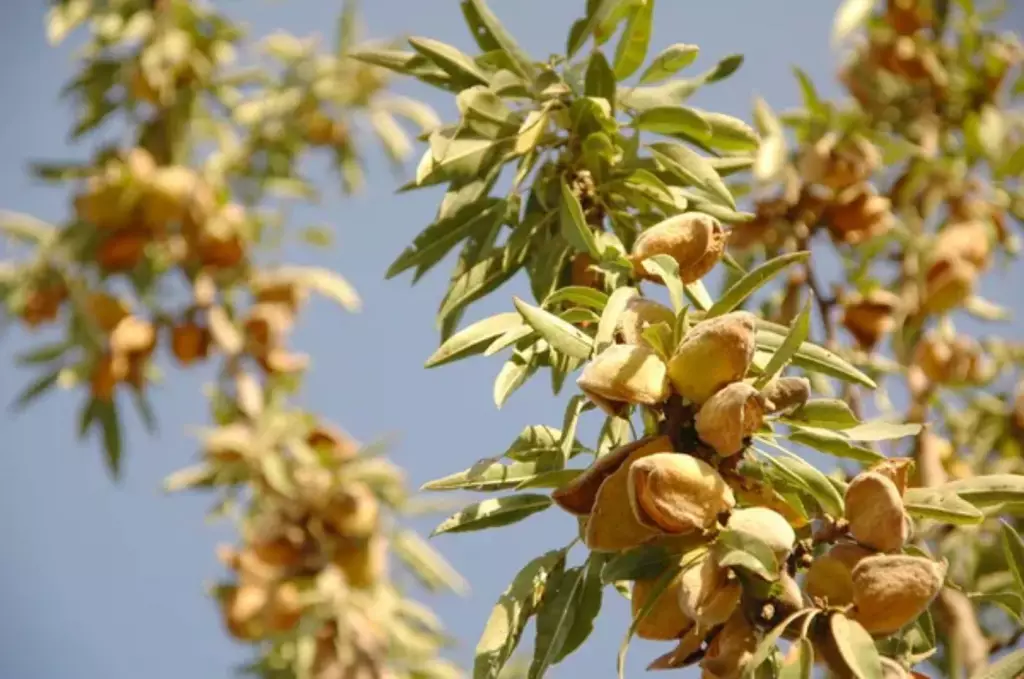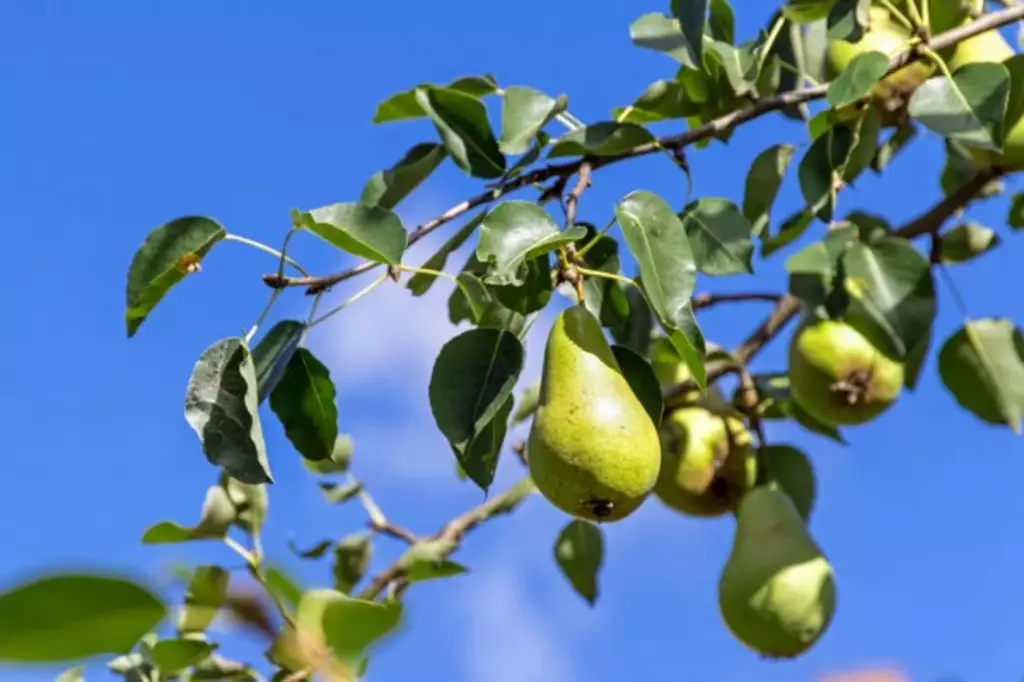These Are the 13 Most Profitable Orchard Crops
A small home orchard can earn up to $500–$2000 each year. If you want to earn extra profit by taking care of your orchard, you can do so by planting crops that will not only add beauty to your landscape but will also maximize the return on your investment. In this article, we have listed 13 of the most profitable crops that will ensure the success of your orchard.
Thirteen of the most lucrative orchard crops include fruit trees like apple, peach, plum, pear, and cherry trees; nut trees like walnut, almond, chestnut, hazelnut, macadamia, pistachio, and pecan trees; and vines such as grapevines. These crops are known for their high potential market value and adaptability to various climates.
The profitability of these crops depends on several factors, such as market demand, yield per acre, time before maturity, and their ability to resist diseases. Let's dive deeper into how these factors affect the value of these crops to help you decide if they are worth planting in your orchard.
Summary
- The thirteen most profitable crops to grow in your orchard are apple, peach, plum, pear, cherry, walnut, almond, chestnut, hazelnut, macadamia, pistachio, pecan tree, and vines such as grapevines.
- The profitability of orchard crops depends on several factors such as market demand, time of maturity, yield per acre, and resistance to diseases.
- Some orchard crops, especially nut trees, take years before producing their first crop. Pecan trees take at least 4–6 years before bearing a crop, while black walnut trees need at least 7 years to produce nuts.

On this page:
The Most Lucrative Crop Additions to Your Orchard
| 13 Most Profitable Orchard Crops | |
|---|---|
| Apple tree | Macadamia tree |
| Almond tree | Pistachio tree |
| Walnut tree | Pecan tree |
| Peach tree | Plum tree |
| Pear tree | Cherry tree |
| Chestnut tree | Grapevine |
| Hazelnut tree | |
1. Apple trees are profitable crops
Apple trees are a popular choice for orchards due to their relatively low maintenance requirements and high demand for their fruit. With tree densities of 450–600 trees per acre, you can maximize profitability in your orchard by planting these trees.
2. Almond trees are in-demand crops for orchards

Almond trees are an increasingly popular choice for orchards due to the growing demand for almond products. By planting this crop, you can tap into lucrative markets while enjoying the beauty of their delicate blossoms.
3. Walnut trees are a valuable addition to orchards
Walnut trees are prized for their valuable timber and nutritious nuts. Although they take 4–7 years to begin producing nuts, these long-living trees can bring you consistent income for up to 100 years.
4. Peach trees are profit-making crops for orchards
Peach trees are not only beautiful additions to your orchard but also produce a popular and versatile fruit. With proper care, your peach trees will offer attractive yields and a potentially high return on investment.
5. Pear trees are lucrative orchard species

Pear trees combine the elegance of their floral display with the appeal of their versatile fruit, making them an excellent choice for your orchard. With consistent maintenance, you can expect an attractive profit from these fruit-bearing trees.
6. Chestnut trees produce large yields of crops
GSP Celestial Chestnut trees are fast-growing trees that produce large yields, reaching maturity in just 3 to 5 years. These trees offer both nut production for consumption and timber for various uses, making them a versatile choice.
7. Hazelnut trees can be a valuable addition to your orchard
Hazelnut trees offer a delicious nut that is sought after for its flavor and nutritional content. By growing these trees, you can participate in a niche market with growing demand.
8. Macadamia trees can be a good investment in your orchard
Macadamia trees produce a highly desirable nut that can fetch premium prices. By nurturing these trees in your orchard, you can benefit from the demand for this luxury nut and the beauty of their glossy foliage.

9. Pistachio trees offer an opportunity for a significant profit
Pistachio trees can be significantly profitable if you can provide the specific growing conditions they require. By planting and maintaining these unique trees, you can reap the financial benefits of the ever-popular pistachio nut.
10. Pecan trees can provide a considerable profit
Pecan trees are prized for their delicious, buttery nuts and can provide you with a considerable profit. With proper care and patience, you can enjoy bountiful yields and maximize your investment in these stately trees.
Although they don’t produce a heavy crop every year, one healthy pecan tree is known to produce 200 – 250 pounds of nuts in a good year.
11. Plum trees are rewarding crops for orchards

Plum trees can be a good choice for your orchard, providing lovely foliage and juicy fruit. If you want your plum trees to thrive and produce a healthy crop every year, you may want to maintain and care for them regularly.
12. Cherry trees produce an attractive and profitable fruit
Cherry trees can make you good money while also adding a touch of beauty to your property. As you take care of these picturesque trees, you can expect a solid return on your investment.
13. Grapevines are a profitable addition to your orchard
Grapevines are versatile plants that can be used for various products such as wine, raisins, and fresh grapes. By cultivating grapevines, you can diversify your orchard and capitalize on the many possibilities they offer.
4 Factors Contributing to the Profitability of Orchard Crops
High-demand fruits like apples, peaches, and cherries are popular choices for a profitable orchard. But nut trees, like walnuts, almonds, and chestnuts, can also generate substantial income.
When deciding which of these orchard crops to grow, you may want to consider factors such as demand in the market, time to maturity, yield per acre, and resistance to diseases. Let’s look at how each factor affects the profitability of the crops.
Market demand determines the profitability of orchard crops
When there is high demand for a particular type of fruit, most farmers will charge higher prices for their produce, which in turn increases their profitability.
Conversely, if there is a low demand for a certain fruit, they may have to sell their produce at lower prices or even incur losses.
The quality of the fruit produced by orchard trees also affects their profitability. High-quality fruit is more likely to command higher prices in the market, while poor-quality fruit may be rejected by buyers or sold at lower prices.
Time of maturity significantly impacts the profitability of orchard crops
If you harvest the fruits or nuts of your orchard crops at the right time, you can ensure optimal fruit quality, which can command higher prices in the market.
Harvesting fruit too early or too late can result in poor-quality crops that may not suit most consumers’ tastes. Therefore, you may need to consider the right timing for harvesting.

Pecan trees, for example, will only be ready for harvesting around October – December, with some beginning to be ready for harvest around September. On the other hand, black walnut trees’ first harvest will only be until they reach 7 years of age. If you want them to produce quality wood, you’ll need to wait longer—up to 25 years.
The yield per acre contributes to the profitability of orchard crops
The higher the yield per acre, the more fruit can be harvested and sold, which in turn increases the revenue generated by the orchard.
To maximize yield per acre, you may need to implement effective management practices such as proper pruning, fertilization, pest, and disease control, and irrigation. You might also need to carefully select and manage the right cultivars and rootstocks that are well-suited to the specific growing conditions of the orchard.
The crop’s ability to resist diseases ensures a steady stream of income for your orchard
Diseases can significantly reduce the yield and quality of fruit, which can lower your income.
Additionally, controlling diseases can be expensive, as it often requires the use of costly chemicals and other management practices. If you plant disease-resistant cultivars and rootstocks, you may help reduce the risk of disease outbreaks and minimize the need for costly disease control measures.
Moreover, you can also reduce the risk of crop failures due to disease outbreaks, which ensures a consistent supply of fruit and a steady revenue stream for your orchard.



